Cajun Gumbo with Chicken, Shrimp, Crawfish, and Andouille
Slow-Simmered Goodness with Flavors from the Heart of Cajun Country
I learned to cook gumbo the real way—standing over a hot pot in a bustling kitchen in Baton Rouge, LA, where I attended culinary school. Classic French—including regional Cajun and Creole dishes was the foundation of our training, and gumbo wasn’t just a recipe—it was a rite of passage.
We spent hours perfecting dark, glossy roux—because the roux is everything in Cajun and Creole cooking. It’s where the depth begins, where patience matters most, and where you start building flavor that tastes like home.
Every time I make gumbo, I go back to those strict kitchen lessons:
Take your time!
Season every layer!
Give the dish the love it deserves!
That’s how you get something rich, deeply savory, and totally worth the wait.
The Essential Elements of a Classic Gumbo
If there’s one dish that defines Louisiana cooking, it’s gumbo. This deeply flavorful, soul-warming stew tells a story in every spoonful—of African, French, Spanish, and Native American influence all simmered together in one pot. Whether you're new to gumbo or just love the process as much as the result, here are the key elements that make it truly classic.
1. A Roux That Means Business
It all starts here. A proper roux—equal parts fat and flour, cooked low and slow—is the backbone of gumbo. In Cajun cooking, we take it to a chocolate brown. The darker the roux, the deeper the flavor. This step takes patience and constant stirring, but trust me, it’s worth every minute!
2. The Holy Trinity
You’ve heard of mirepoix—now meet the Southern version: onions, celery, and bell pepper. This trio is the aromatic base for almost every Cajun and Creole dish. Once they hit that hot roux, the magic begins.
3. A Rich Stock
Great gumbo needs a great stock. I like to use low-sodium chicken stock for poultry-based gumbos and a homemade seafood stock if I’m going all in with shrimp, crab, or crawfish. This is what brings all the other flavors together.
4. Protein with Personality
Classic gumbo is all about layering. That means pairing things like andouille sausage with seared chicken thighs, or adding shrimp and crawfish toward the end of cooking. The mix of proteins gives gumbo its signature complexity and heartiness.
5. Okra and/or Filé Powder
Okra adds texture and a little natural thickening to the pot, while filé powder (made from ground sassafras leaves) lends earthiness and depth. Some cooks swear by one or the other—many use both. I say use what feels right or what is available.
6. Season Generously
This isn’t the place to be shy about flavor. Bay leaves, fresh thyme, garlic, salt, pepper, and your favorite Cajun seasoning blend all have a role to play. A touch of cayenne or hot sauce brings the heat, if that’s your thing.
7. Always Over Rice
Long-grain white rice is the traditional base for serving gumbo. It soaks up the broth and balances the spices. Fluffy, simple, and essential.
Why Use Oil Instead of Butter for a Roux?
In classic Cajun and Creole cooking, oil is traditionally used to make a dark roux because it can withstand higher temperatures than butter without burning. A dark roux—the foundation of a great gumbo—needs to cook slowly and steadily to develop its deep, rich flavor and color.
Butter contains milk solids that can scorch easily during the long cooking process. At the same time, oil provides a more stable fat that allows you to safely achieve that essential chocolate-brown roux without risking bitterness or burnt flavors.
Ingredients
For the Roux and Base:
1 cup vegetable oil
1 cup all-purpose flour
1½ cups finely chopped onions
¾ cup diced green bell peppers
¾ cup chopped celery
3–4 garlic cloves, minced
6–8 cups low-sodium chicken
½ teaspoon dried thyme
3 bay leaves
2 teaspoons Worcestershire sauce
2 teaspoons sea salt
½ teaspoon cayenne pepper (optional)
For the Protein and Vegetables:
1 lb andouille sausage, sliced into ½-inch rounds
3–4 bone-in, skin-on chicken thighs
1 lb medium shrimp, peeled and deveined
1 lb crawfish tail meat
1–1½ cups fresh okra, sliced into ½-inch pieces
For Seasoning and Garnish:
2-4 tablespoons Cajun seasoning (or Bek’s Cajun Seasoning Blend)
3–4 sprigs fresh thyme, leaves removed
Fresh thyme leaves, chopped green onions, and sour cream—for garnish
Hot sauce, for serving (optional)
Long-grain white rice, for serving
Instructions
1. Brown the Sausage and Chicken: In a large skillet over medium heat, brown the sausage slices on both sides. Remove and set aside. In the same pan, sear the chicken thighs, skin-side down first, until golden brown, about 4–5 minutes per side. Remove and set aside.
2. Make the Roux: In a large Dutch oven, heat the vegetable oil over medium heat for about 1 minute. Gradually whisk in the flour, stirring constantly. Cook until the roux reaches a chocolate-brown color, about 35 to 60 minutes. Stir continuously to prevent burning.
NOTE: All stoves vary. Your roux may take longer to reach the chocolate-brown stage—be patient!
3. Build the Base: Stir in the onions, bell peppers, and celery. Cook until softened, about 5–7 minutes. Add the garlic and cook for 1 minute until fragrant.
Adding the veggies to the roux allows it to cool down and prevent scorching and burning.
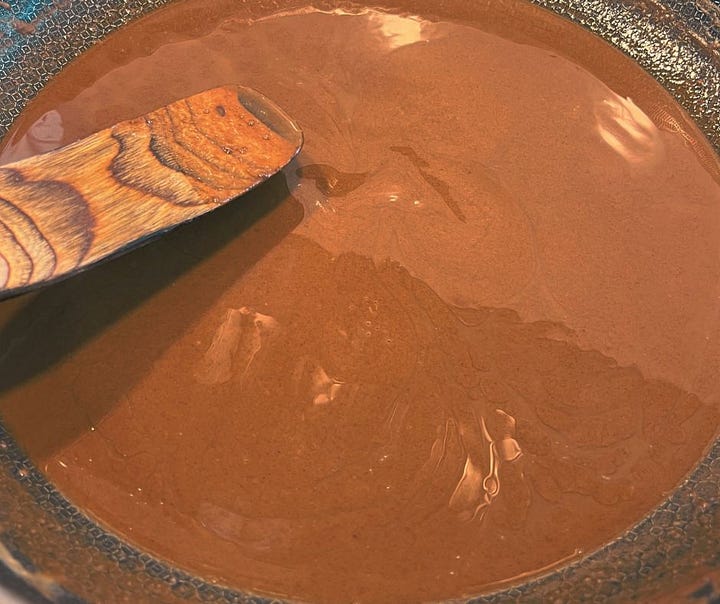
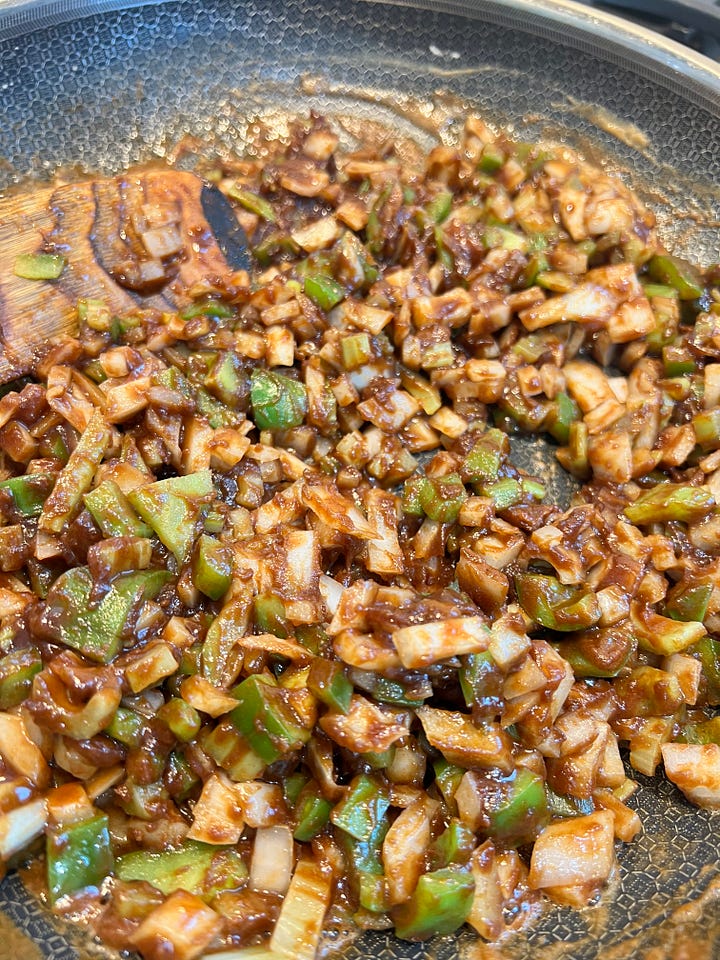
4. Add the Broth and Simmer: Slowly add the chicken stock, scraping up any browned bits from the bottom of the pot. Add the Cajun seasoning, dried thyme, bay leaves, Worcestershire sauce, sea salt, and cayenne pepper (if using). Return the sausage and chicken (skin removed) to the pot. Bring to a boil, then reduce the heat to low and simmer uncovered for 45 minutes.
5. Add the Seafood and Okra: Remove the chicken thighs. Shred or chop the meat, discarding the bones, and return the meat to the gumbo. Stir in the shrimp, crawfish tail meat, and sliced okra. Simmer for 10–15 minutes, until the shrimp are pink and cooked through.
6. Finish and Serve: Stir in the fresh thyme leaves. Adjust seasoning to taste. Remove the bay leaves before serving.
To Serve: Ladle the gumbo over fluffy white rice. Garnish with chopped green onions, thyme leaves, and a dollop of sour cream if desired. Serve with hot sauce on the side.
Notes and Tips:
Patience is key. The rich flavor of gumbo begins with the roux — take your time and stir constantly.
Seafood swaps: Crawfish can be replaced with shrimp, lobster tail, crab, clams, or mussels if needed, or omitted altogether.
Even better the next day: Gumbo develops even deeper flavor after resting overnight and freezes beautifully for future meals.
If you give this gumbo a try, I’d love to hear how it turns out for you. Whether it’s your first time making a roux or your fiftieth, there’s always something special about slowing down and cooking with heart.
Leave a comment, share your twist, or just let me know how it tasted—your kitchen stories are always welcome here.
xoxoxo
~ Bek


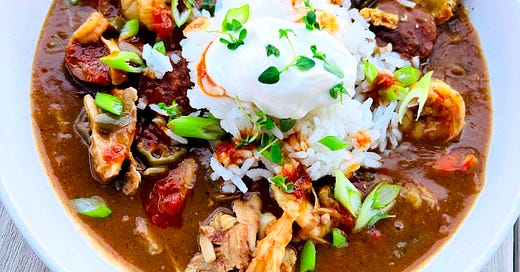



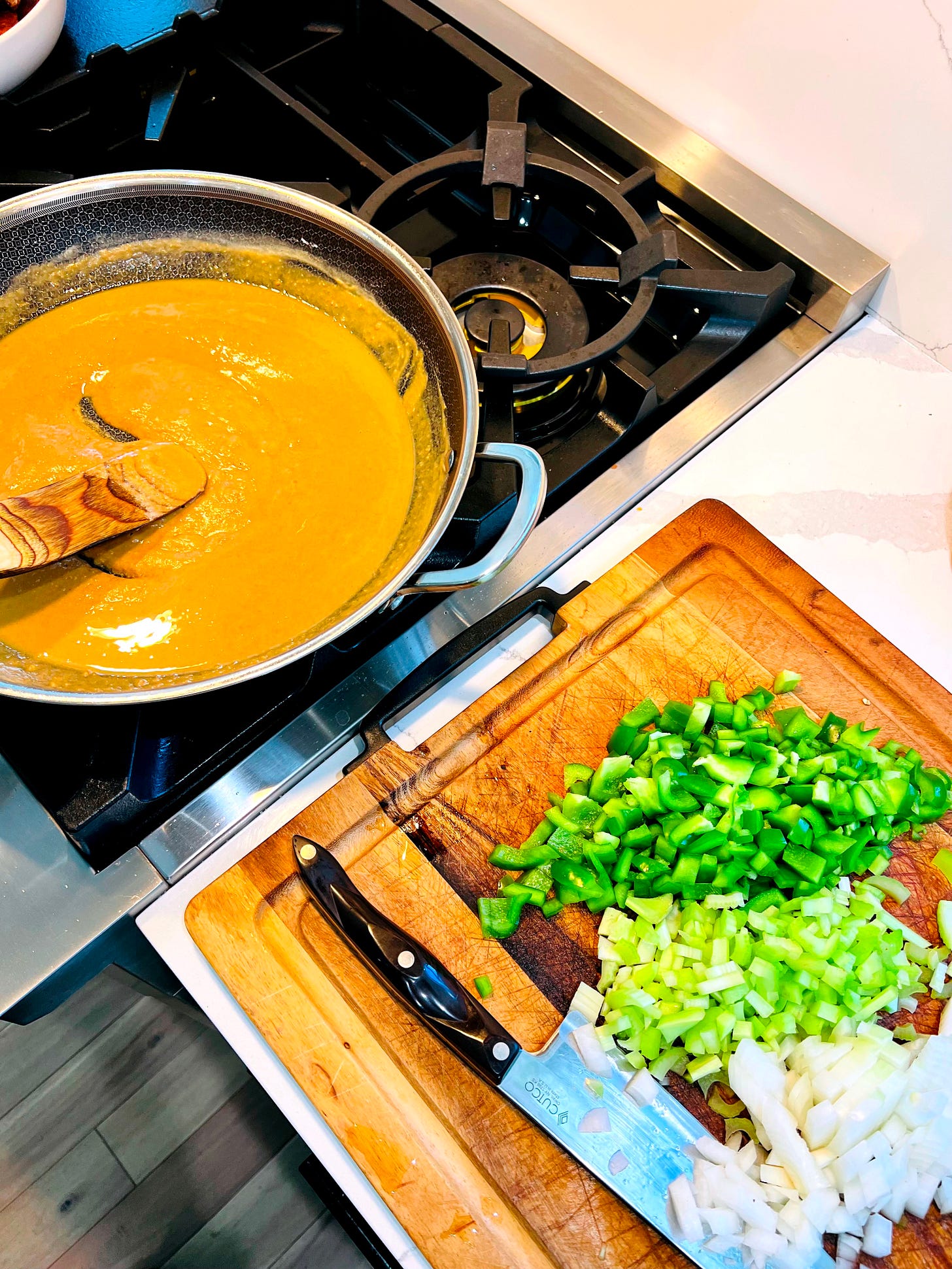
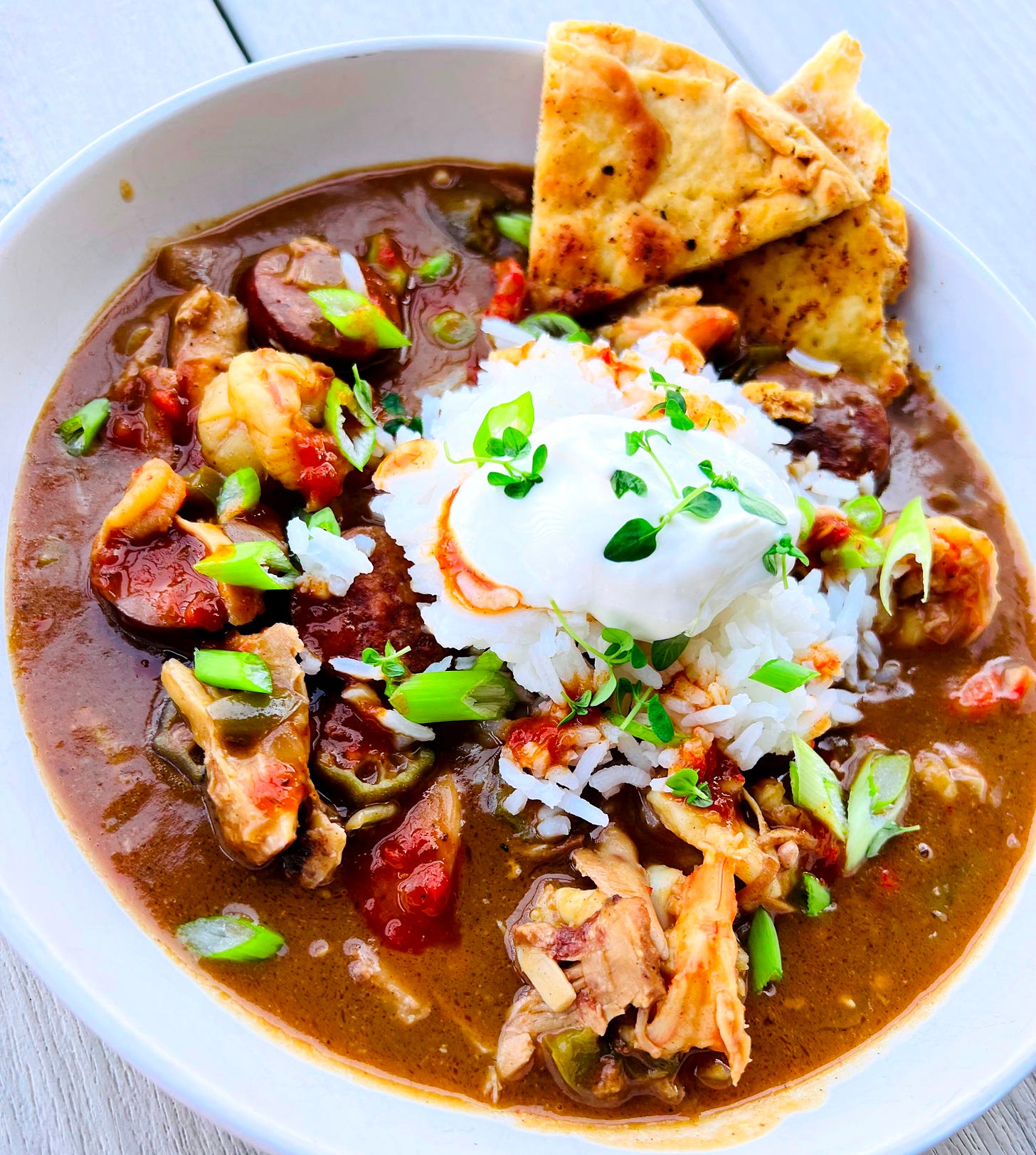
Why am I singing this?
Jambalaya and a crawfish pie and fillet gumbo
For tonight, I'm a-gonna see my, my cher au mi-oh
Pick guitar, fill fruit jar and be gay-oh
Son of a gun, we'll have big fun on the Bayou
One of my good friends is from Shreveport LA and she makes a very similar recipe. Super duper delicious - great recipe to have ‘written down’, she said her recipe is a little of this and a bit of that … nice to have the quantities.